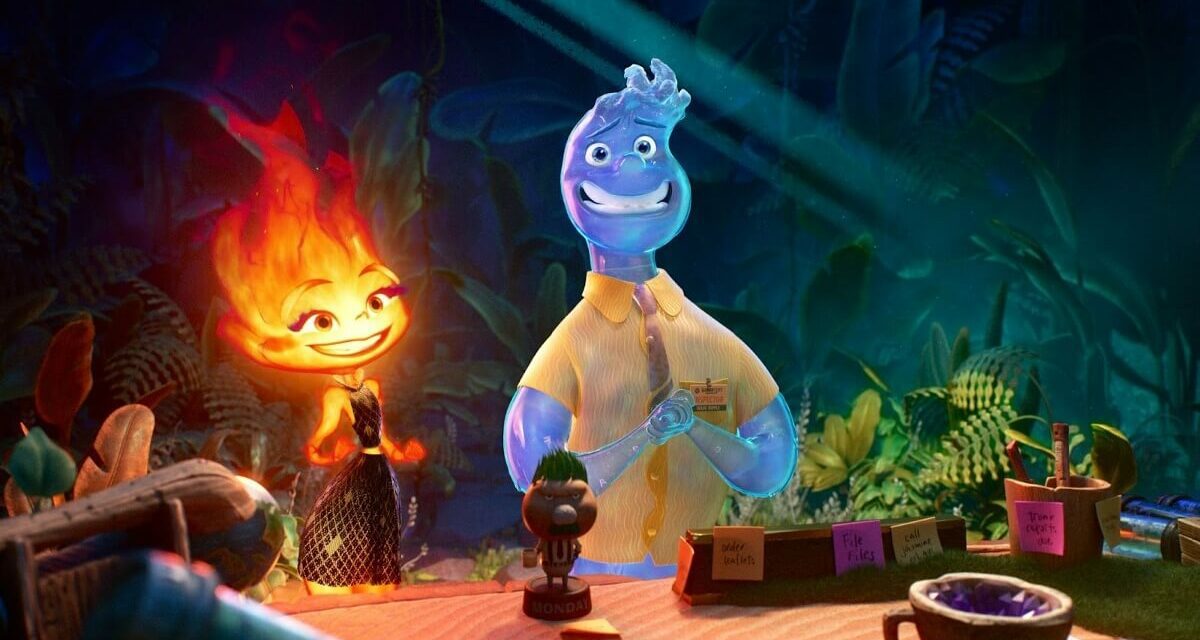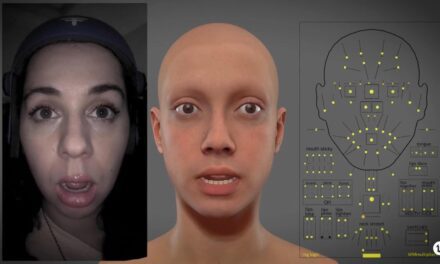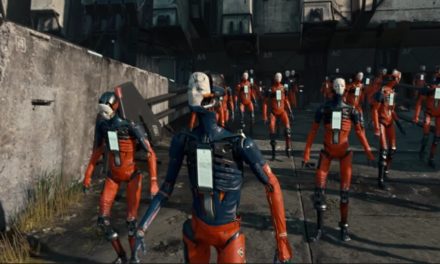I imagine the laboratory for the Pixar Animation Studios team looks like something out of Willy Wonka. Chocolate waterfalls rain from the ceiling, VFX artists wander about in candy cane striped high socks, and the creators of Elemental wander from station to station in scientist coats like Henry Wu in Jurassic Park birthing baby raptors.
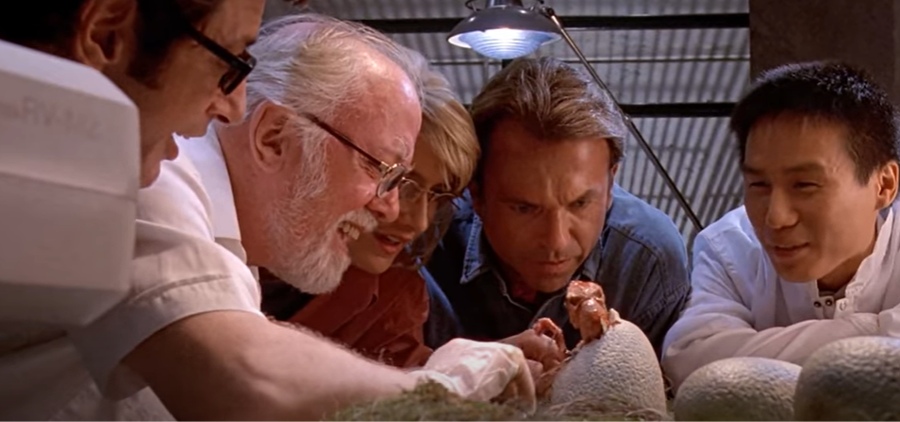
What the creators of Elemental looked like hatching out another Pixar classic (probably).
But instead of raptors, the Pixar team is concocting biologically engineered animated films that come out with wonderful plots and no screams of jungle terror.
From the writing to the worldbuilding, Elemental looks like it’s going to parachute down from a Pixar blimp and land to fill audiences with wonderment and baby tears. The week before release, here’s the speculation on why Elemental is already considered a visual achievement.
The Pixar animators and VFX artists needed to wait for technology to catch up
This sentiment throws a callback to Avatar 2: The Way of Water. The story and vision were developed, but the power to do the characters justice hadn’t yet been created. An Awards Daily Elemental preview stated that during a press day, the Pixar team shared slides that compared the computing power of different Pixar films. The animation of Finding Nemo, a film released in 2003, required 1,000 computers. The rendering power required for Elemental was 151,000 computers. In an interview with Global Grind, VFX Supervisor Sanjay Bakshi said:
When we saw it on paper, on the storyboards, you’re right. It’s like, ‘We don’t have the technology right now to make this happen.’ It was universal. We don’t have what we need to finish this. But if I’m being totally honest, I didn’t think we couldn’t do it. I’m like, ‘If you give us the right people and this place is [filled] with the right people and enough time, we’ll figure this out.’
The new complexity of achieving the textures and language of movement in Elemental is reflected in the creative team’s demand at SIGGRAPH 2023. The conference has a core identity to showcase innovative emerging tech and has scheduled Pixar Animation Studios to host presentations that include Elemental’s volume rendering, development of the fire and water characters, the techniques used for living vegetation, and the approach behind volumetric crowd scaling. Pixar will present and educate in a total of nine(!) presentation sessions during the five-day program.
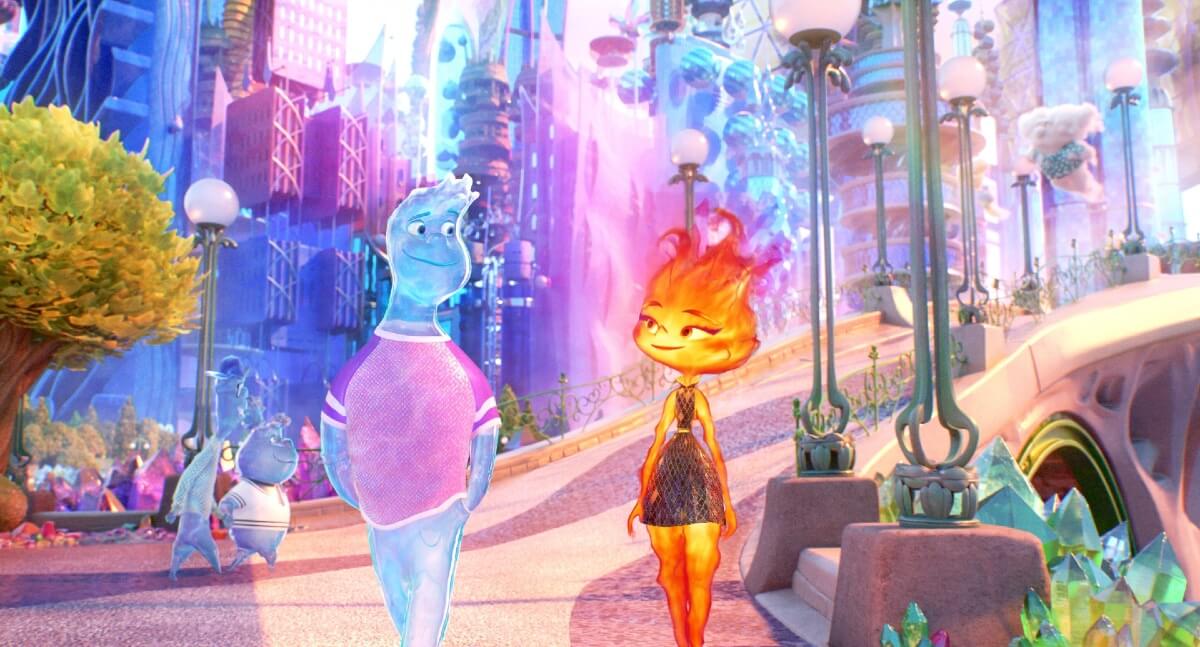
The animation leaps in Elemental have been compared to 1995’s Toy Story, and the gap is enormous
Andrew Ihla of Looper.com wrote about Elemental as Pixar’s most technologically challenging film. One quote – which has been mirrored in many outlets at this point – said:
“Elemental continues Pixar’s tradition of doing the impossible.”
The snarky response would be: “It’s not impossible – they did it.” Creators sat down with their big brains and made it possible to bring us animated characters that will make us want to light a candle and talk to the flame.
But the hyperbole carries a lot of truth. Director and Writer Peter Sohn pitched the story following the release of 2015’s The Good Dinosaur and the movie took seven years to complete. The team was tasked with puppeteering the fluttering wispiness of fire, the amorphous nature of air, and what was asserted as the most difficult concept – the glimmering reflective nature of ever-shifting water.
The Looper article detailed that an average Pixar model has about 4,000 points of articulation, and the characters of Wade and Ember in Elemental (water and fire) were each comprised of 10,000 individual animated controls. With that in mind, comparing Toy Story to the rendering power utilized in Elemental feels like comparing a Neanderthal to a man comfortably living on Mars. A 2020 Techradar Toy Story VFX article said that to render each of the 114,000 frames in Toy Story, a single frame took up to 30 hours.
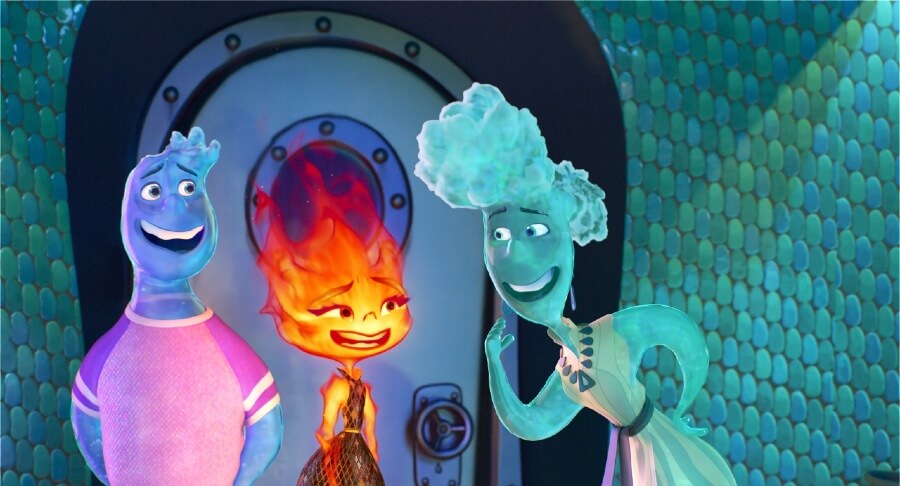
The Pixar Animation team invented the programming language needed for Elemental’s Ember character
The Disney-themed Laughing Place blog explored the intensive brainstorming that went into the creation of Ember by Sanjay Bakshi and the rest of the VFX team. They needed a live, flickering flame that shifted its facial features and colors and intensity according to the moods of Ember in any given frame.
Jeremy Talbot, the character supervisor of modeling and rigging, needed to rig a character that could stretch, shrink, disappear, and gyrate like a real flame. Pixar’s in-house Technical Director for character animation, Junyi Ling, developed a machine-learning program called Neural Style Transfer that allowed the animators to create a catalog of animated flames and apply them to Ember’s dynamic performance. According to Laughing Place, this technology enabled them to “make tweaks to the volumetric layers, density field, temperature, velocity, and the illumination of this fiery character.”
Besides the complex textural challenges, VFX Voice reported that VFX Supervisor Sanjay Bakshi developed a toolkit specifically to manipulate Ember’s emotions. The artists could turn up or down feelings like sadness on a modulating dial. Bakshi told VFX Voice:
Our simulation and shading artists were changing a bunch of knobs to get it to feel like what sadness is. Then we map that to one number so there is a sadness control. It was like a zero to ten kind of thing. More effort was put into fire because Ember is the main character and goes through the most emotions.
Unfortunately, Bakshi’s emotion modulator isn’t available for resale to live humans.
Elemental’s animation will melt an audience in the atmosphere of summer
Elemental feels like the type of movie that sticks to your heart like animated gum, and you don’t want to scrape it off. I think of the visceral first ten minutes of Up, the exuberance adults felt toward Toy Story, and the endearing tenderness of Finding Nemo.
The air is warm, the smell of popcorn permeates the air, and yeah, you’re summer memory experience was made possible by a team of Willy Wonka-style Pixar artists running to and fro amongst chocolate waterfalls hatching animation breakthroughs from giant golden eggs.
At the core of it, what you have is this:
A movie built with an outpouring of technical dedication, an overflowing sincerity of heart, designed to melt you into lush Elemental City as you’re enveloped in story on a warm summer night.

